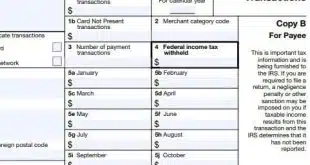n
By Jane Adler
Retailers and consumers are shifting from plastic to virtual gift cards, drawn by instant availability and ease of distribution. Is the tangible gift card on its way out?
With holiday sales in their sights, retailers are expanding their gift card offerings with virtual or digital versions of the popular presents. Delivered via e-mail or to a smart-phone application, the virtual cards replace the plastic ones that have become a gift-giving staple for last-minute and indecisive shoppers.
At the same time, bank rewards programs are increasingly turning to virtual gift card solutions, shunning the tangible cards that cost a lot to produce, warehouse, and track. Employers are also adopting virtual cards as incentives and rewards for a job well done.
Mobile wallets like the one being rolled out by Google Inc. should also spur sales of virtual cards, experts say, as consumers are finally able to consolidate gift cards and rewards on their smart phones.
Evidence is mounting that virtual cards are reshaping the gift card market and the profit equation for merchants, fulfillment houses, and incentive companies alike. Even so, virtual or digital cards have a long way to go before they completely overtake their plastic predecessors.
Consumers already understand how real gift cards work. And many shoppers still like a tangible gift. Plastic cards are also widely available, easy to pick up at the grocery store or big-box retailer just before the big holiday party.
Holiday-Driven
Though still a small part of the prepaid market, virtual cards are taking off. Giftango Corp., Portland, Ore., manages plastic and virtual cards for merchants and incentive companies. About half of the gift cards issued through awards programs are virtual. “Consumers are coming to a Web site to redeem their rewards points,” explains David Nelsen, chief executive at Giftango. “It sets up the perfect scenario for a digital gift card.”
The ITA Group, an incentive company in West Des Moines, Iowa, uses Giftango as its platform for employer-sponsored gift card programs. Employees earn points that can be redeemed for retail gift cards. Virtual cards were first offered as an option about a year ago.
“We are seeing a shift to virtual cards,” says Larisa Mendenhall, director of individual awards at ITA. “People were hesitant to use virtual cards at first, but they appreciate the immediacy and the convenience.”
Whatever the production and fulfillment costs, virtual cards can boost merchant sales by extending the holiday shopping season, most experts agree. Consumers who shop at the last minute or need a gift quickly can have a virtual card delivered immediately. The advent of customized cards that carry a personal photo or greeting should also help to boost holiday sales this year.
Christmas Day itself is one of the top selling days of the year at CashStar Inc., a digital-gifting company based in Portland, Maine. “Last-minute gifting drives more sales this time of year,” says David Stone, a former American Express Co. executive who founded CashStar and serves as its president and chief executive.
CashStar provides virtual gift card solutions for 200 merchant brands. About 20 of those retailers, the ones on the cutting edge of the virtual card boom, offer gifting options to social-network sites such as Facebook. A handful provides a smart-phone gift application, an area expected to grow quickly as retailers adopt mobile solutions.
CashStar has been working with JPMorgan Chase & Co. for about a year on digital gifting through an Apple iPhone application. The Chase GiftShelf app for the iPhone can be used at well-known retailers such as Pottery Barn, Home Depot, Gap and Starbucks.
In September, CashStar introduced a MobileGiftRewards iPhone/iPad application that allows users to redeem bank-issued rewards at participating retailers. The app finds the merchants and allows users to set up location-based alerts. Users redeem rewards through a bar code on the phone that can be shown at checkout.
In advance of the holidays this year, gift card manufacturer and marketer Arroweye Solutions Inc., Chicago, has introduced a solution that allows its retail partners to offer the option to consumers to deliver a gift card to a friend’s Facebook account.
The new delivery method caters to young people who don’t check their e-mail accounts but spend a good amount of time chatting with friends on the social-networking site. Arroweye plans next year to offer gift card delivery to mobile phones via text message.
“The gift card market is really driven by holiday sales,” says Ben Jackson, an analyst at consulting and research firm Mercator Advisory Group Inc., Maynard, Mass. “But as more retailers put these virtual cards on their Web sites, we’ll see sales really take off.”
‘Big Spike’
The gift card market in 2010 totaled about $97.16 billion, according to Mercator. So-called closed-loop cards, those issued by a retailer to be used at their own store, accounted for most of that volume, with sales of $84.6 billion. Open-loop cards, such as a Visa-branded gift card, can be used almost anywhere and had sales in 2010 of $12.56 billion.
The virtual card market for now is a nascent, small, and fragmented business. Mercator’s best estimate is that virtual cards command about 4% of the closed-loop market, or $3.45 billion. For the 12 months ending May 2011, about 13% of consumers had bought some kind of virtual gift card.
Others estimate the size of the virtual market at only about $1 billion to $2 billion. Some say the virtual gift card market is trending to reach as much as $4 billion in 2012.
By Mercator’s count, only 36 of the top 100 retailers in 2011 offered a virtual gift card. This compares to 33 retailers in 2010. “That’s not a huge jump,” says Jackson.
But a separate survey released in late October by Miami-based RSR Research LLC found that 58 of the top 100 Internet retailers had virtual gift cards, a 45% jump from 2010, when 40 of the retailers offered virtual cards.
It’s hard to know exactly how quickly the virtual gift card market is growing, notes Mercator analyst Jackson. “Growth looks fast when the numbers are still so small,” he says. And, Jackson adds, virtual gift card sales could actually slow this year if the weak economy takes a bite out of all holiday retail sales.
Jackson expects the sale of virtual gift cards to grow gradually and then expand quickly, perhaps in 2012, as more retailers integrate e-gifting into their Web sites. “One year we will see a big spike in sales,” predicts Jackson.
User ‘Headache’
Until then, some obstacles remain. Consumer adoption will take time. Many consumers like to give a real card. And some consumers, especially those who are less tech-savvy, are unlikely to buy a card online and send it via e-mail or text to a relative or friend. This group will probably never adopt the virtual card, which means that the plastic gift card is here to stay, experts say.
The consumer experience when buying a virtual card needs some fine-tuning, too. In its recent study, RSR Research found that some major retailers like Apple, Sony, and Kohl’s don’t even offer the cards. Among those retailers that do issue virtual cards, offerings can be hard to find on their Web sites, says the study, which was sponsored by CashStar.
Other problems include a difficult or confusing order process and a lack of integration between the Web and the point of sale, making it difficult to redeem cards. Some retailers also fail to notify senders when cards are received, and many don’t offer card personalization.
“The user experience is a headache,” says Steve Rowen, RSR managing partner, in Boston. “More retailers have implemented a virtual gift card solution, but the question becomes: Is it a good, user-friendly solution?”
Delivery and redemption, especially from the recipient’s viewpoint, is a problem too. About 95% of virtual cards are delivered by e-mail, experts say. The recipient usually prints the card out to take to a store, or uses a code on the card to redeem it at the retailer’s site. But not all retailers have the digital scanners at the point of sale needed to read the code on the e-mail and redeem the gift.
Other delivery methods include posting the gift card to a Facebook account or sending the card directly to a mobile phone. But, again, not all retailers have scanners that can read barcodes off a cell-phone screen. “Redemption is an important issue,” says Mercator’s Jackson. “The virtual [card providers] don’t think about hardware at the point of sale.”
But once retailers work the kinks out at the cash register, interesting marketing scenarios could emerge, Jackson believes. Rewards could be linked to offers of a certain time duration or location, for example. “Campaigns can be fine-tuned with virtual delivery in a way that you could never accomplish with a mass mailing or advertisement,” says Jackson.
The growing popularity of the smart phone and its increasing sophistication will eventually boost the use of virtual cards. But for now mobile e-commerce sites are not always the easiest way to shop or redeem rewards.
‘No-Brainer’
The ability to customize virtual cards is a big advantage, retailers and industry analysts say. CashStar’s merchant solution allows shoppers to select a card from a variety of styles, write a personal message, and upload a photo. “About 97% of consumers write a personal message on the card,” notes CashStar’s Stone. “About one out of seven upload a photo or image.”
The Home Depot Inc., a CashStar client, gives shoppers the option to upload a video greeting to the card. Shoppers can use a digital camera or computer Webcam to make the video, which appears as a box on the e-mail’s opening page. Last Father’s Day, Home Depot launched a plastic card that includes a special code where recipients can view a sender’s video greeting online. The success of the video-linked plastic product encouraged Home Depot to add video uploads to virtual cards.
Retailers also like the cost advantage of virtual cards. Physical cards must be produced, warehoused, and shipped—all steps that boost expenses. Virtual cards cost about $1 to $5 to deliver. Plastic cards cost anywhere from about $5 to $12, sources say.
But virtual cards aren’t “free” either. A merchant usually has to hire a company to handle fulfillment. An in-house virtual gift card solution requires the right technology and staff expertise.
Fraud is another concern, notes Render Dahiya, chief executive at Arroweye. “Digital cards require more monitoring to keep fraud down,” he says, explaining that the speed of the digital transaction makes fraud difficult to stop when, for example, consumers are using bogus payment credentials to buy a virtual card online. When expenses for the technology and fraud prevention are tallied, he figures, the cost of a virtual card is about the same as a physical one.
The cost of a gift card program—whether it includes both virtual and plastic cards or not—depends on a number of variables, according to CashStar’s Stone. Cards sold through third parties that charge a fee, such as the cards displayed on peg boards at the grocery store, can be more expensive for the retailer than virtual cards sold on its site.
CashStar covers fraud losses, which makes the virtual card a little more expensive than the plastic card. Shipping is another factor, however. If the consumer pays for shipping, the virtual card can be more expensive for the retailer than the plastic card.
That’s not stopping the shift to virtual, however. Madison Performance Group, an employee incentive company in New York, partners with Giftango. “People can order a virtual card and get it in 10 seconds,” says Alex Richman, director of global merchandising at Madison. He adds that about 60% of the redemptions are still for plastic cards, and 40% for virtual. “But virtual is taking off,” notes Richman, who expects virtual cards to grow quickly. “It’s a no-brainer.”
Gift Card Facts
Total value of market: $97.16 billion
Value of closed-loop cards in 2010: $84.6 billion
Value of open-loop cards in 2010: $12.56 billion
Estimated total value of virtual cards: $3.45 billion
Fraction of closed-loop market: 4%
Fraction of consumers who have bought a virtual card: about 13%*
*For the 12 months ending May 2011
Source: Mercator Advisory Group
n




